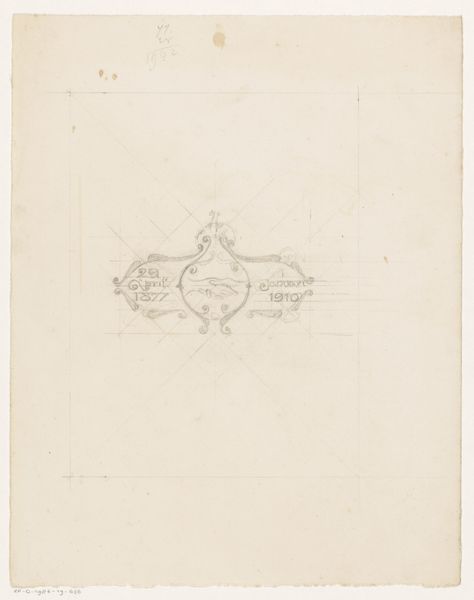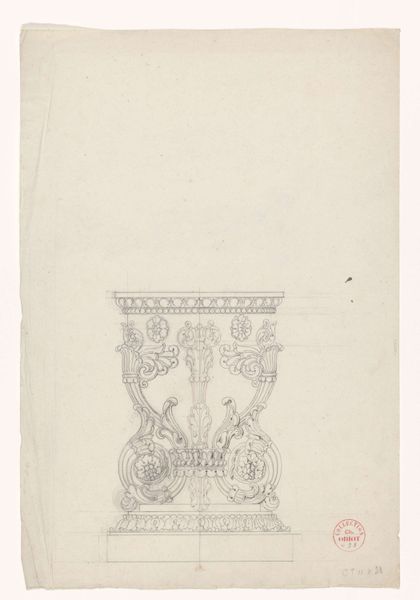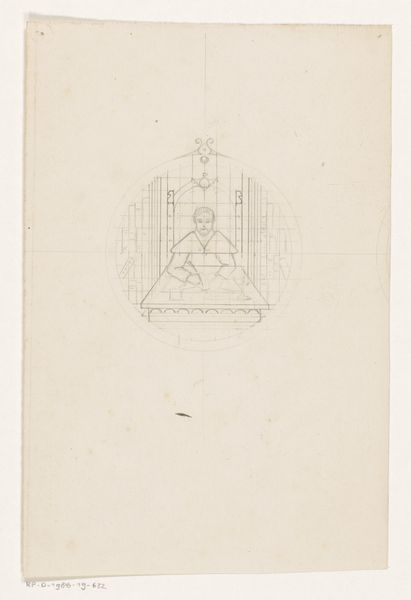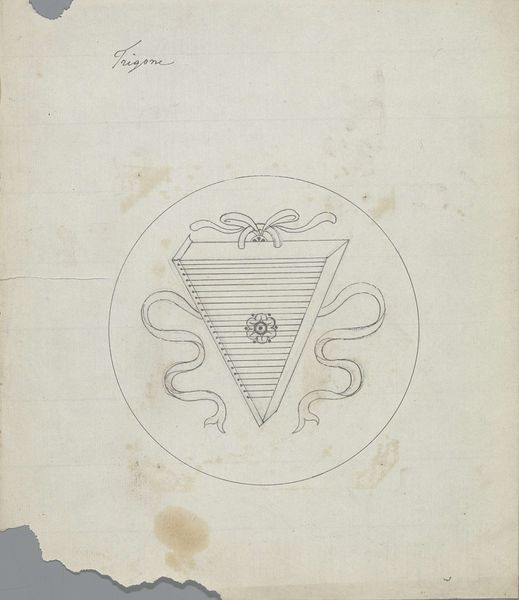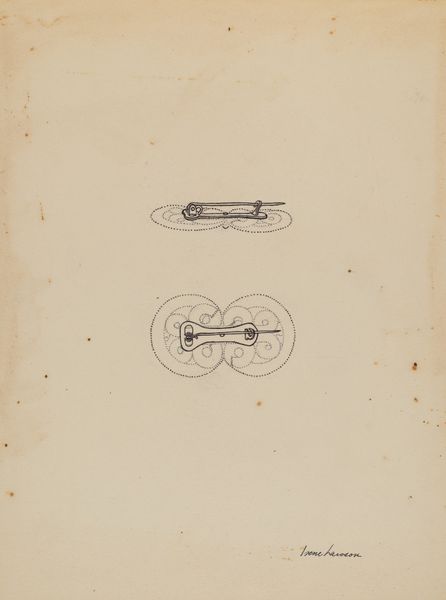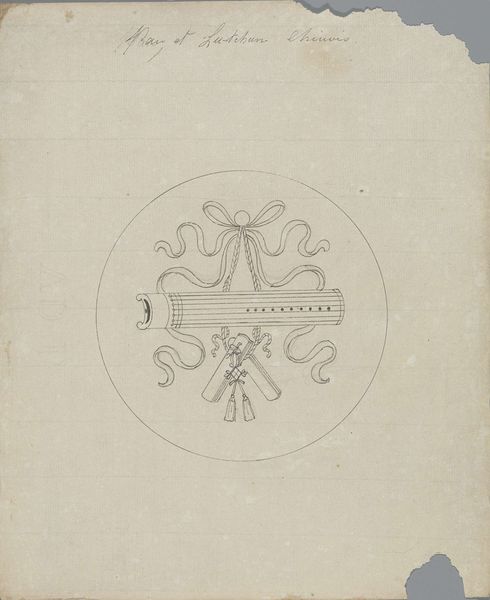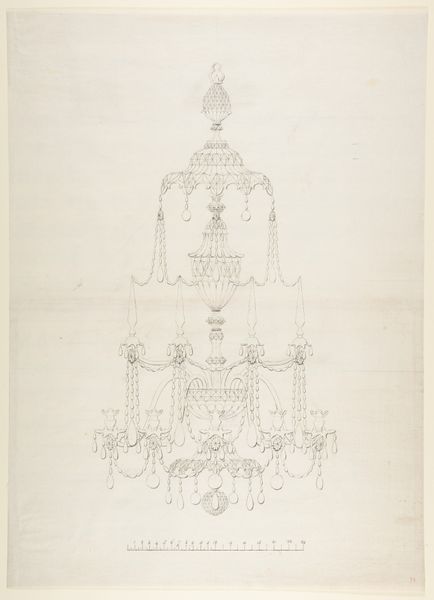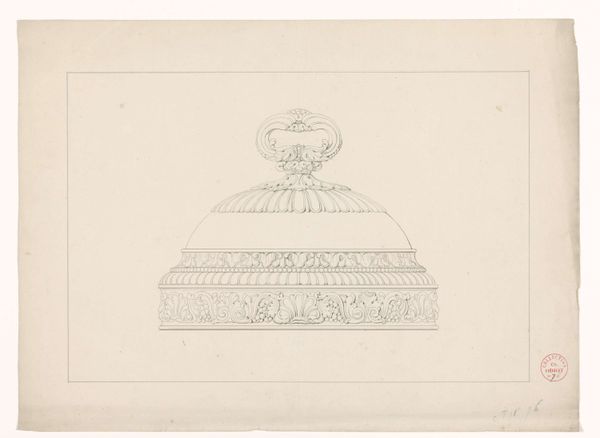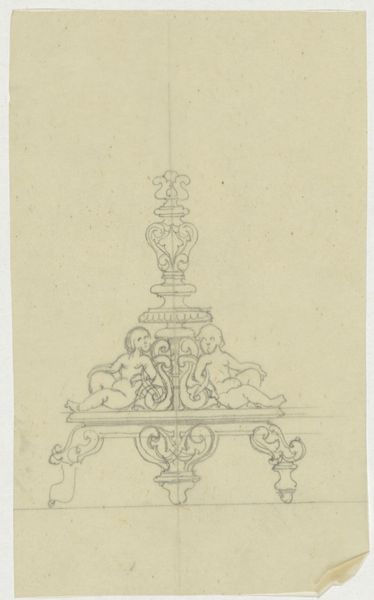
drawing, pencil
#
drawing
#
neoclacissism
#
pencil
#
decorative-art
Dimensions: height 480 mm, width 302 mm
Copyright: Rijks Museum: Open Domain
Curator: Before us, we have "Ontwerp voor dekselschaal," a pencil drawing conceived around 1825-1830 by Charles-Nicolas Odiot. It appears to be a design for a decorative covered bowl, showcasing meticulous detail. Editor: It's remarkably serene for a preparatory sketch. The symmetry is quite soothing, even meditative. You can really feel the artist carefully mapping out the components. Curator: Precisely. Odiot’s engagement with Neoclassicism is evident in the idealized form and precise execution. Consider the clear, controlled lines which give shape to its classical urn form and floral motifs. The interplay of light and shadow suggests a play of textures between the envisioned metalwork and sculpted details. Editor: Agreed, but I can’t help but wonder about its place in courtly life at that time. These ornate table settings speak volumes about the rituals of power and status in post-revolutionary France. The floral garland detail, while decorative, also reads as a way for newly instated families to align themselves with symbols of nature. A softening of the regal imagery to welcome new social dynamics. Curator: An interesting proposition. I'd posit, rather, that Odiot seems interested in pure design elements: the curve of the handles echoing the lid, the rhythm of the fluted body, and even the implied gleam of the non-existent silver. The material possibilities fascinate, with each mark serving the illusion. Editor: But how do we separate "pure design" from the power structures it served? A piece like this doesn’t just sit; it signifies. How many families were actively being denied access to this "ideal?" The luxury and skill that went into a bowl are always someone else's denied resource. Curator: Perhaps. The formal elements here though suggest a certain timelessness, irrespective of its social context. It transcends utility and embodies form at its most elegant and restrained. Editor: It does certainly compel one to remember who could afford such elegance and, more importantly, at whose expense. Curator: A question for all periods, perhaps. Editor: Precisely, perhaps.
Comments
No comments
Be the first to comment and join the conversation on the ultimate creative platform.
